Speed 16 knots (kts) Course 11° Location 73.195° N, 151.031° W, Southwest Beaufort SeaThe Beaufort Sea lies to the north of Alaska and the Yukon and Northwest Territories. north of Barrow, AK Depth 3803 meters
SPECIAL FEATURE DISCUSSION:
(see previous journal for the questions.)
As acidity increases, pH decreases.
The CTDA research tool that is submerged in the water to measure conductivity (salinity), temperature, and depth. cast produces a profile of conductivity (equatable to salinity), temperature, and oxygen levels on the descent. This graph can be used to determine the best places to collect water on the way back up.
Even though pH levels are recorded by the automated pH profiler, having water samples lets chemists do comparison pH measurements to verify the accuracy of the instrument. Other variables can also be measured from water samples and a portion of each Niskin bottle's contents are sealed and sent back to the lab on shore for further analysis.
TODAY'S JOURNAL:
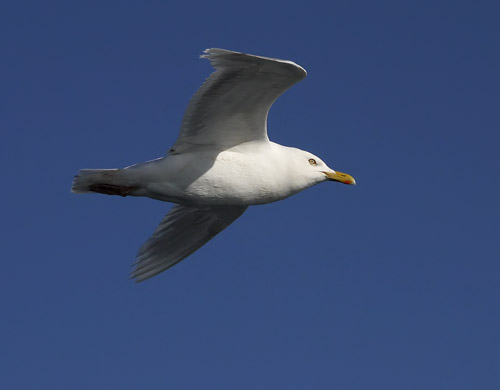
Yesterday we lingered in the vicinity of Barrow, Alaska waiting for the opportunity to pick up a replacement crew member and fuel filters for the CCG Cutter Louis. S. St. Laurent. The Louis kept collecting seismic data and can only make 4 kts. during that process. So we raced ahead for the pickup in Barrow and are now going back north pretty fast to meet up again as we enter the ice.
The wait provided a great opportunity for the crew to practice boat operations. It turns out that the Healy has many smaller boats aboard. But launching boats off the side of a large moving ship is a potentially tricky undertaking so there is a briefing for all involved parties before each boat launch to go over safety and the job of each crew member for a successful operation.
The first boat launched was the Arctic Service Boat (or ASB.) This is a pretty large workhorse, weighing about 16,000 lbs (about 8 tons.) It has an enclosed cabin and large cargo area, accessible by a drop-down bow. One cool thing this boat can do is to operate as a landing craft by running up onto a beach and dropping down the bow ramp to load or offload gear from shore. Getting such a heavy boat on and off the Healy involves using the large 04-deck starboard-side crane, which picks the boat up off of its cradle on the 02 deck using a harness of heavy straps. The crane then lowers the ASB down to the main deck level where the crew boards the boat. Finally, it is lowered the rest of the way down to the sea (about 6 feet), detached from the crane, and sent on its way. On yesterday's mission this boat picked up the Canadian Coast Guard crew member from Barrow, and the process was essentially reversed to get the ASB secured back in its cradle.
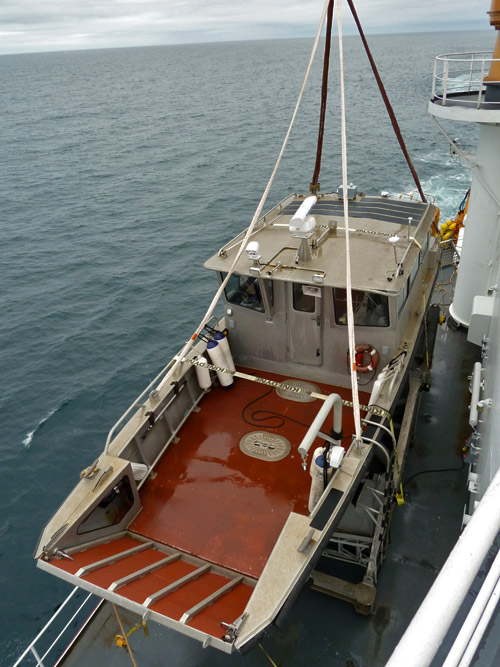
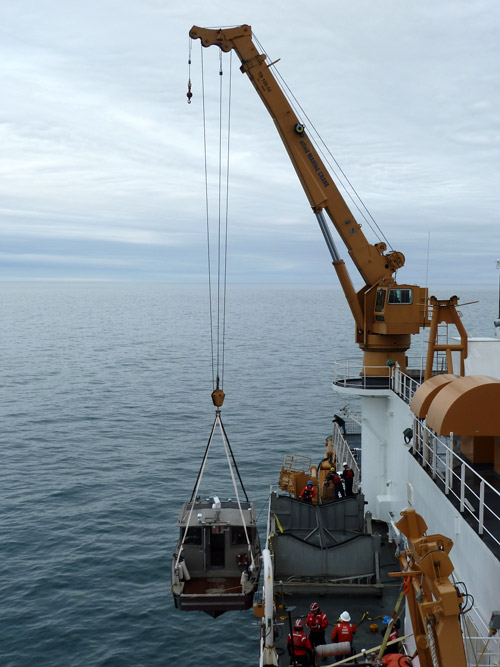
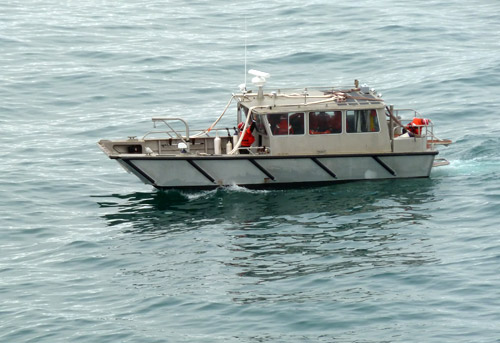
Another type of boat that the Healy carries is called a Rigid-Hull Inflatable (RHI.) This is kind of a hybrid between an inflatable raft and a speed boat. The Healy has two such boats, one on each side. These are smaller boats that typically operate with a crew of 3. Each RHI is kept on a davit which is a device to lower and raise small boats on a ship. A RHI davit consists of a support structure that stays put and a cradle attached to ropes that guides the RHI down the hull to the water or back up the hull to the davit. The RHI crew boards the boat all the way up at the davit and rides it down to the sea. As the fuel filter parts weren't in Barrow yet during the ASB run in, we sent a RHI back to Barrow later in the evening to pick up those parts.
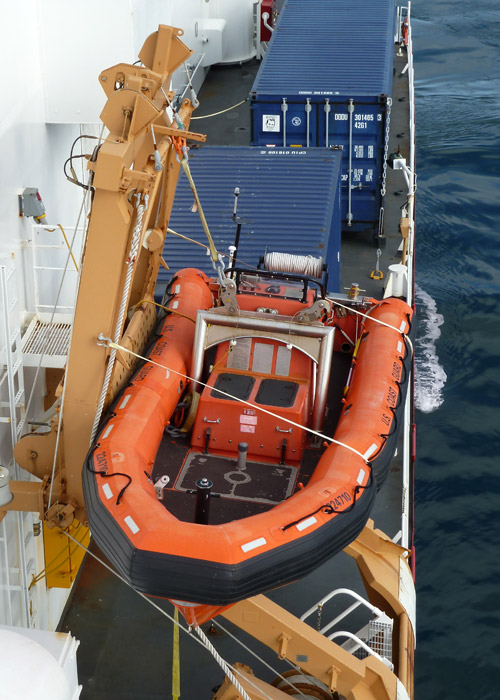
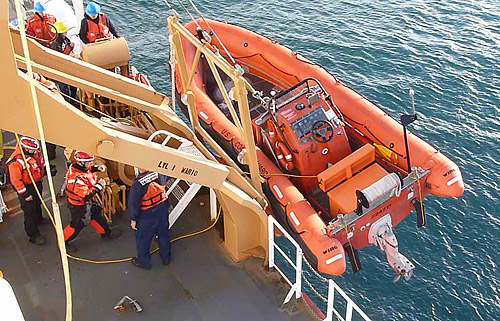
http://
A third kind of boat on the Healy is the one we hope never to use- inflatable life rafts. these are kept in cylindrical canisters and there are a total of 8 on the ship, 4 on the port side and 4 more on the starboard. Each of us has an assigned life raft to report to in case of emergency or drill- mine happens to be lucky life raft #5.
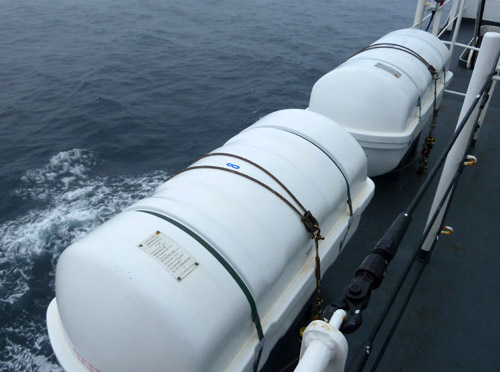
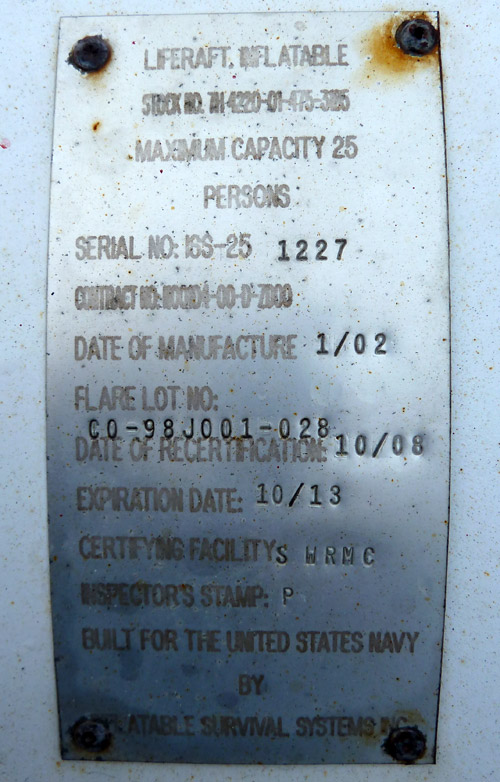
SPECIAL FEATURE:
What is the total passenger capacity of all 8 life rafts on the Healy?
What geographic distinction can Barrow, AK claim?
That's all for now! Best- Bill


Comments